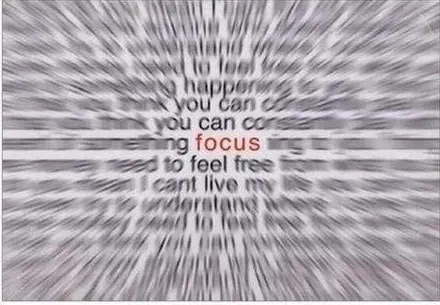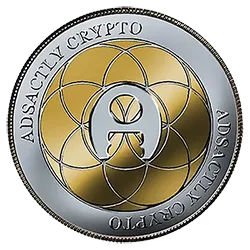Optometrics: A new hope for legasthenia
The background history
My son is dyslexic, at least several years ago a reading and writing disability was diagnosed. So he is part of a steady growing group of pupils having major difficulties with reading (according to the latest PISA study by the OECD). This group represents 30% by now! From health insurance and the school we only got help finding a psychologist and also we got a paper granting my son some more time for his tests and exams in school. Apart from that it was hell… probably even more for my son than for us, the parents, having to idly watch our smart little boy despairing and being consumed by the mills of normalization. Math never was a problem; he was even better able than me solving complex mathematical tasks by mental arithmetic. But the test exercises broke his neck. In the end there was an E grade in German and a C- in Math marked in the school certificate, not even talking about the other teaching subjects involving always a lot of reading.

Nevertheless our boy knew more about the things he was hearing than all his age-mates combined (e.g. in a room full of average educated adults, he probably would know more about ichthyology than all of them together). Now what can be done having such a smart little boy sitting at home, getting more and more frustrated about the demands society or rather the school has towards him…
About six months ago, I found by chance a possible solution, shortly after our eye doctor had dissuaded us from a pair of glasses. He never directed us to this solution, no other doctor mentioned it to us, no school officials knew about it (even not in his school specialized in dyslexia), not even the psychologist ever heard about it:
Optometics and an individual visual training (Syntonics)
Possible Reasons:
Lack of movement
Our society is becoming more and more digital. Gameboy, television, computer, etc. are not suitable to properly train the hunter-gatherer-oriented movements and, above all, the visual apparatus.Older siblings
Important stages of development are skipped, to faster learn to walk, as the bigger brothers or sisters do.Not enough time by the parents
Even in the crèche or kindergarten rather static and quiet activities are preferred, because it is easier to handle quiet children instead of a raging gang of them. Children always end up in the crèche because their parents have to work again or even want to.
The result is a lack of developmental steps in motor skills and visualization. For example, while crawling, the brain is trained to balance the wobbly horizon of information provided by the eye. Children who can walk earlier simply have problems with it. Here it can come to a so-called angular deficiency. The consequences are headaches, reading problems, faster fatigue, shorter attention spans, photosensitivity, pain in neck and shoulders.

What does Optometrics do?
Optometry measures not only the eye but the entire visual system with standardized tests and so checks all functions. On the basis of this test, it’s possible to create an individual training, which compensates for possible malfunctions and weak points. The success rate of this therapy is over 80%!
The result of my son's first test:
- No sense for his blind spot
Thus a limited field of view and reduced reaction to things that happened outside of his limited field of view. You have to imagine, you would see the world while carrying blinders.
- no horizon and angular misalignment of the eyes
Holding lines in a book is an almost impossible task
- little sense for the difference between distance and proximity (extremely slow adaptation)
As a result, even small differences in distance are difficult to handle, which makes reading even more difficult.
- Theoretically negligible hyperopia (+1 diopter)
Normally, glasses are not recommended here, but with the problems enumerated so far, reading becomes an almost impossible task
Explained in images
IMAGINEYOUHADTOREADATEXTTHATWOULDLOOKASTHISONE.BUTTHISISEXACTLYWHATHAPPENSWHENYOURCHILDCAN’TREALLYFOCUSWITHHISEYES.
Itcou l’dal solo oklikethi sbu titwo n’tg etan yeasier. Imag ineanad ditionalhy perop tia andyou’l lbeto tallylost.

Explained in numbers
My son had to refocus about 400 times while reading a text with 100 words. A normal developed person would only need about 50 times.
This makes reading about eight times more exhausting than it would be for people without the malfunction. Imagine you read for an hour a day to gather the information needed for your work. For my son this would have been a complete working day of effort, compared to you.
What happened since.
After the initial test, we started an individual therapy a few months ago. First a color therapy, then eye muscle training, synchronization training and finally perception and reading training. Every two weeks we met the trainer and did some new training, also we did individual exercises for about 15 minutes every day. Most of the time we had fun doing it. Sometimes it led to some frustration.
Almost all values are now back to normal range and some even in a very good range.
It even makes him happy to read books. Even his teachers have noticed how much better his reading and reading comprehension have become. It was absolutely unimaginable only half a year ago, that my son would eventually read a book voluntarily. In the meantime this is normality. Of course, we continue the exercises anyway, so that at some point everything is in good range.
THX STEEM! Without my earnings from this blockchain this wouldn’t have been possible
The downside to this therapy is, there is no support for it from anywhere. It is not a medical treatment but is offered by opticians. Doctors do not know about it or they ignore it; health insurance companies do not pay for it (at least in Germany) and you can confidently flout government in such matters. The problem is not big enough, even if the economic damage is already enormous.
The initial tests cost only 50 €. This test series shows if and what can be done. All in all, we invested about 1000 € (1200 $) on the therapy and the borrowed equipment, but OUR SON IS ABLE TO READ NOW. I am sure the health insurance companies have already spent many times more for the psychologist and the ophthalmologist, as well as for the dyslexia school. Nothing of this helped, but what really helped, nobody wanted to pay. Almost nobody even knows about the solution.

Conclusion
If you have a hard time reading, or if you have or know a child who is supposed to be a dyslexic, give them this tip and find an optometrist offering optometry and syntonics. In Germany, there are just under 130 places who offer this. I know little about the availability in the rest of the world. Every Dime invested is worth improving the reading ability and saves you from loosing near half of your lifetime earnings or those of your child.
THX for reading
@pollux.one
all images are CC0 creative commons from Pixabay
Click on the coin to join our Discord Chat

Witness proposal is here:
Go To Steem Witness Page
In the bottom of the page type: adsactly-witness and press vote.

Use small letters and no "@" sign. Or, click here to vote directly!
Thank you!